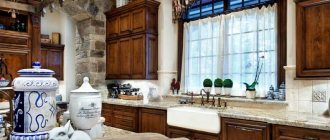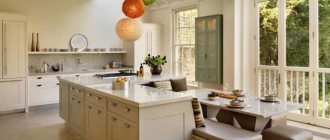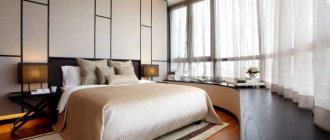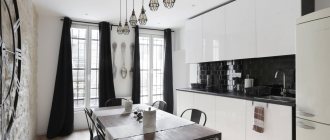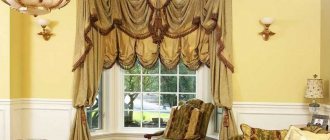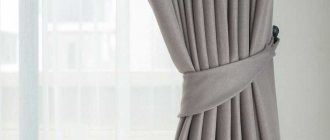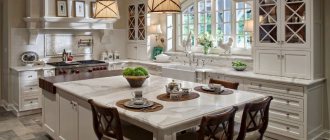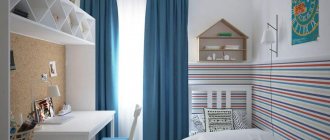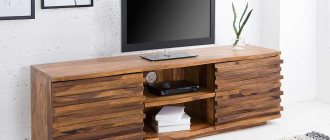Peculiarities
Nowadays, tulle has become a necessary window accessory in almost every home. Its main advantage is versatility, lightness and practicality. Tulle mesh in the interior can play not only an aesthetic role, but also a protective one - it prevents the penetration of dirt from the street, and also helps make a dark room brighter.
Tulle mesh is made of mesh material, quick-drying and easily breathable. The downside is that simultaneously with the transmission of air, the tulle itself collects dust, and therefore quickly becomes dirty. However, this will not be a problem, because tulle is easily washed, both in a machine and by hand washing.
Thanks to its lightness, mesh tulle retains its shape and is almost impossible to tear. Even if the edges of the tulle curtain are not processed, it will not come apart or become deformed.
Colors, textures and tips for window design
Tulle mesh is available on the market in a huge range of colors and textures. This is both a light French fabric and a lush, dense structure (Turkey) with clearly visible cells. Each variety is suitable for different windows, taking into account combinations with other materials. Below are several recommendations for the successful use of mesh in window decoration.
- The stiffer and denser the threads from which the mesh is made, the better the fabric will hold its shape. This is true when the curtain gathers in thick folds.
- If mesh tulle is chosen for the living room as an independent decorative option, you need to choose a fabric with a large mesh. Two canvases that can be left loose or assembled with tiebacks will look best. Such curtains are hung on a tubular metal cornice; large eyelets can be used.
- The tulle mesh can be the length of the floor or exceed the height of the wall and the soft drapery can be laid on the floor. The second option is suitable for curtains of light colors, and the first - for a grid of intense bright shades.
- The thicker the cage, the worse the tulle transmits light and accumulates more dust. This tulle will have to be washed often.
- Mesh made from natural fabrics is ideal for interiors in country, minimalism, and loft styles. This is a great option for any ethnic background. Leather tape or rope with decorative trim are suitable as tiebacks for such curtains.
- If the curtains are made of thick velvet or jacquard, the mesh will best balance the materials and dilute their heaviness.
- Any mesh goes well with natural linen 2 shades darker. This unique duet is suitable for the eco-style beloved by many.
- For the kitchen, it is better to prefer thick muslin, which is hung up to the windowsill on a beautiful cornice. An original version of a simple kitchen curtain.
- Türkiye and Germany are considered the best mesh producers.
Related article: Thresholds for linoleum: how to join laminate flooring between rooms, T-shaped floor threshold and flexible profile
Mesh tulle (plain or embroidered) is as popular as thread curtains. These types of window decoration options are at the peak of fashion; they are loved for their ease of care, versatility in use and a wide selection of colors. By choosing the right color scheme and calculating the footage, you can begin to bring any ideas and plans to life, creating a bright mood in the interior.
Main types
Tulle, like any other textile, is presented on the market in a wide variety of options, differing in weaving and material.
The most famous is the French network. It is created by hook knitting stitches, thus creating air loops. Loops may differ in size, structure and relief.
Embroidered tulle is a fabric covered with an embroidered weaving pattern, which can be intertwined with the mesh itself.
Synthetic tulle mesh is distinguished by its coarse weave and massiveness. As a rule, such curtains look impressive, even if the mesh is fine, and add volume and prominence.
Turkish tulle mesh is made of small cells, fine weaving, which is why it is popularly called “spider web”.
Much depends on the main type of thread with which the tulle is woven. Its fibers can be soft or hard, matte or shiny, fluffy or boucle. The choice depends solely on the taste of the hostess.
Color
There are no restrictions here, because all possible colors are presented on the market, including in combination with embroidery or pattern. You can choose tulle for absolutely any color palette of the room.
- White is the most obvious option, preferred by buyers 80% of the time. White color is universal in combination with any other shade, while it makes the room brighter and allows air to pass through.
- Brown tulle is suitable for both dark and light rooms, depending on how the space is geometrically shaped. This color creates a calm, subdued atmosphere.
- Cream or beige color combines the advantages of white and brown. It visually expands the space, while giving the room a lively but calm look.
Photo of tulle in the bedroom
Read here How to decorate a bedroom: 200 photos of original and individual room design
Did you like the article? Share 
Specifics of choice
Most often, tulle remains the second layer, giving primacy to the curtains. It is rarely used separately on its own, unless it is decorated with special embroidery or if the space does not allow for it. In this case, even a combination with curtains may turn out to be in bad taste - you should not overdo it by combining embroidery on tulle and overly bright patterns on the curtains.
The main criteria when choosing tulle are still the size of the room and the main color of the interior. It is worth remembering that tulle is an auxiliary decorative element and plays a more protective role, allowing air to pass through.
Preference should be given to a lighter color than the curtains.
Photos of mesh tulle also offer more radical options - placing light tulle on top of massive curtains. However, this option is not suitable for every home and is not always convenient in itself.
Tulle mesh with embroidery does not fit well with curtains of other materials, since the pattern distracts too much attention. Such tulle does not look good on eyelets, because it is impossible to hang it in even folds, and the ornament of Turkish or French tulle can deteriorate.
The shape of the tulle depends on the thickness and density of the threads from which the fabric is made. The stiffer they are, the more difficult it will be for the tulle to change shape.
Here are some basic tips:
- Large mesh tulle is best suited for decorating a hall or living room.
- The length of the tulle depends on its purpose. A long one is preferable for a room, and a short one for a kitchen.
- The size of the mesh weave directly determines its protective capabilities. A fine mesh gets dirty more often, while a large mesh allows more light and dust to pass through, and it needs to be washed less often.
- Different materials will suit different styles. For example, ecological, natural materials should be chosen for cozy country or Provence.
Mesh models and their advantages
There are several types of mesh tulle. One of them is a simple mesh created by air loops when crocheting posts. It can be either small or large, and its structure can be smooth or with convex patterns. Another name for this model is French mesh.
The mesh with embroidery is unique. It is a mesh tulle, on top of which filigree patterns are applied. It is possible to weave mesh with embroidery.
Synthetic tulle (often nylon) with a smooth and dense texture. Mesh tulle, which has rectangular cells, is significantly different in appearance. Such cells are woven from laces or thick threads. The curtain of this model is distinguished by its volume and relief. If the cells are very thin and small, almost microscopic, then this is a tulle micromesh.
All described types of curtains may differ in the use of different types of threads. Among them are bouclé and fluffy, with shiny lurex, hard or soft. If the curtains are hung on the cornice in different ways, the design of the room will change.
In combination with such curtains, ties and drawstrings look harmonious. To decide on the choice of mesh tulle, you need to take into account not only your own taste, but also the degree of lighting in the room and the purpose of the room. In any case, this new decor has quite a number of advantages.
Firstly, both large and micro-mesh tulle look quite original and add a certain zest to the interior of the room. Secondly, mesh curtains have an expressive texture. This feature is used to change the appearance of the room. Windows with such grids will be elegant and unusual.
You may also be interested in: Design of winter curtains and choice of fabric for them
The important thing is that whatever model you like, you can almost always find it in the desired color, since the color range is quite wide. And the last very significant advantage is that the mesh is easy to care for: it takes a long time to get dirty, but is easy to wash, which is why it lasts a long time.
Drapery made from curtain tape
Curtain tape is a fabric strip with a cord that is threaded with a certain frequency. The frequency determines at what distance and how the fabric will gather in the upper part of the fabric. Accordingly, the fewer puffs, the fewer folds there are on the tulle.
Curtain tape can be used to create wavy mesh tulle.
- The edges are folded and processed. The upper part of the curtain is cut into pieces and folded on the wrong side, where the curtain tape is attached, and then ironed.
- Based on the width of the curtain, a cut of curtain tape is made, to which another five centimeters are added.
- The laces are pulled out from both ends of the ribbon and tied. The distance from the top edge is 0.5 centimeters, from the sides - 3 centimeters.
- On both sides, a braid is sewn along the laid basting. The side sections are folded twice and then stitched.
Proper care of tulle
One of the main advantages of mesh tulle is its unpretentiousness. It does not need to be washed often; it retains its presentable appearance for a long time.
With microgrid it's different. On the one hand, it better prevents dirt and dust from entering the room, on the other, it actively collects it.
With proper care, this will not be a problem, but if you forget about cleaning, sooner or later health problems may begin for allergy sufferers and people with sensitive skin. Therefore, even with regular washing, the micromesh should be sprayed with water and shaken out well.
Features of care
Since mesh curtain fabric is a kind of “dust collector”, caring for it involves frequent regular washing. It is performed according to the following rules:
- Curtains in the kitchen need to be removed and dusted. This will allow you to get rid of dust.
- Soak the fabric in warm soap or soda solution. Hot water is strictly prohibited, as it causes the fabric to shrink. Water temperature - no more than 40°C. The volume of water is determined on the basis that it will completely cover the tissue. Soaking time does not exceed 12 hours, for example, overnight. Lye and wool fabrics should not remain in water for a long time, so the required time is 2-4 hours. Powder consumption is 2 times less than when washing.
- For bleaching, you can prepare a soap-soda solution: add a handful of salt and powder to a basin of water.
- You can ensure gentle washing in an automatic machine using a pillowcase in which the curtain is folded. You need to wash at a temperature of 30-40°C, setting the minimum spin speed.
- Mesh kitchen curtains are carefully straightened and hung on the curtain rod while damp.
- These curtains do not need ironing, but they can be steamed.
If the laundry gets wet for a very long time, it turns sour and becomes completely saturated with an unpleasant odor.
WATCH VIDEO INSTRUCTIONS
Related article: How to make a podium in an apartment yourself
Favorable combinations in the interior
Tulle can be used in any room - in the kitchen, in the living room, in the nursery and even in the bathroom.
Curtains for the kitchen - 120 real photos of new designs. Options for the ideal combination of modern curtains in the kitchen interiorHow to diversify your home interior: DIY decor and beautiful design ideas
- How to hang curtains - step-by-step instructions with photo examples and recommendations. Exclusive curtain design solutions from experienced craftswomen
To make it more static, the lower edge of the tulle can be decorated with additional embroidery, or patterns in the form of rhombuses, flowers, leaves or even animals can be added.
When choosing mesh tulle with embroidery, it is worth remembering a sense of proportion so that the curtains do not turn out too tacky and do not distract attention.
Shimmering, shiny tulle is more suitable for the living room than for the kitchen.
You should not combine cold shades with warm ones, avoid excessive contrast and saturation.
All advice is for advisory purposes only. The final choice depends only on the taste and desire of the owner of the house.
How to choose tulle for different rooms
When choosing curtains, you need to know that large and micro-mesh tulle are often used in combination with heavy curtains or blinds. This rule does not apply to tulle with embroidery, which looks self-sufficient. This tulle is best suited for small window openings. A small kitchen window can be decorated with just a French mesh.
Mesh tulle will be a good option for small rooms, children's rooms, as it allows the sun's rays to pass through well, which visually enlarges the room. French mesh or other varieties should be in harmony in color and texture with the curtains and the overall interior.
Ideally, the top layer should be thick curtains made of expensive fabrics (silk, velvet, linen). It doesn’t matter whether they are without a pattern, patterned or in a rich bright color. Under these curtains you need to hang a tulle mesh, which is distinguished by its lightness. However, this option is considered a classic; a novelty in the style is hanging curtains exactly the opposite: on top there is a tulle micromesh or a large mesh, and the second layer is heavy curtains.
The owner must decide for himself which option to choose, but it is recommended to choose fabrics in one color, but the shades of this color may vary.
An interesting design solution is to hang the tulle mesh not over the entire width of the curtains, but in strips. The strips can be collected and tied or left loose. The situation is more complicated with French mesh, since embroidered fabrics cannot always be successfully combined with other materials. When hanging, sometimes even assemblies are not obtained.
You may also be interested in: Window design with multi-layer curtains - tips with photo examples
Most often, mesh fabrics are used to decorate the kitchen, but other rooms will look great with the right curtain model. For example, for a bedroom or nursery, a tulle mesh with large cells, the basis of which is a fluffy thread, is better suited. But in these rooms they need to be supplemented with thick curtains. Thanks to the softness and fluffiness of the thread structure, you can get a warm, cozy atmosphere, which is important for the cold season.
Thin mesh tulle, characterized by transparency, on the contrary, is recommended to be hung in the summer. You can experiment with them by stacking them in several rows. To do this, you can take grids of different colors.
